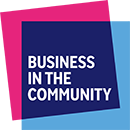Material gains: upcycling at Jaguar Land Rover
This case study describes how automotive companyJaguar Land Rover has used circular thinking to reclaim materials from their end-of-life products and reuse them to make new products more sustainable.
What is the issue?
In response to the urgent need to produce cars with lower carbon emissions, many auto manufacturers are choosing to make their cars lighter as a car that weighs less produces fewer carbon emissions. This process, called ‘lightweighting’ means replacing traditional materials, like steel, with lighter ones, like aluminium in the manufacturing process. However, the production of aluminium is more energy intensive than the production of steel.
What Jaguar Land Rover did
Jaguar Land Rover took a circular approach to addressing this problem. The company set up the innovative REALITY project to work in partnership with its material supplier, Novelis. Under this initiative, aluminium is recovered from existing Jaguar and Land Rover vehicles and reformed into high-grade aluminium to create new vehicles. The research Jaguar Land Rover undertook for this project shows that household waste, as well as end-of-use vehicles can provide aluminium that can be reformulated in this way.
Between September 2013 and March 2020, around 360,000 tonnes of closed-loop scrap have been processed back into Jaguar Land Rover’s lightweight aluminium intensive architecture, across all vehicle lines. When operating at full capacity, REALITY is expected to reduce the CO2 impact of production while reducing the amount of virgin aluminium required to produce vehicles.
The result:
- 26% decrease in aluminium production emissions.
- 50.7% reduction in global operating CO2 emissions per vehicle compared to 2007.
REALITY is an Innovate UK funded project with a consortium comprising Jaguar Land Rover, Novelis, Axion Group, Norton Aluminium, Innoval Technologies, as well as two academic partners, Brunel University and Warwick Manufacturing Group. It operates as part of Jaguar Land Rover’s wider Reimagine strategy which operates across its supply chain, manufacturing, and operations processes.
What have Jaguar Land Rover learnt?
- Solving one environmental problem can sometimes create another or simply shift the problem to someone else. Taking a clear sighted and holistic approach, allows for solutions that are genuinely sustainable.
- Working in collaboration means better outcomes. The project required a move away from a transactional supplier relationship to a closer partnership, and specific processes were introduced to improve active collaboration and governance.
- Tackling in-house problems can result in outcomes that benefit other businesses. The research findings of the REALITY project produced a solution that can be adopted by others in the sector, and possibly beyond.

“This project has allowed us, for the first time, to recover premium automotive-grade aluminium from scrapped vehicles and reuse its unique properties.
Jaguar Land Rover
The potential of this on the production process is a reduction in CO2 impact as well as helping us reuse even more aluminium”

Business in the Community’s work on the circular economy
The circular economy offers an alternative way of using resources to a traditional, linear economy. Resources are designed for longer lifetimes, repair, reuse and reprocessing. It is evident that we need to redesign how resources are used to achieve a zero carbon economy.
This case study is one of a series which share how BITC members have achieved carbon reduction by taking a circular economy approach.

CLIMATE ACTION: THE TIME IS NOW

Related content
Circular Fitout Lab Actions Statement
Download the Circular Fitout Lab insights document to read the inventory of actions and statement of demand from the lab.
Going Circular for Net Zero: in your hands
This Business in the Community (BITC) report sets out the enablers and levers that can help businesses mainstream circular economy action.
Optimising Bioresources: reducing water pollution
This report provides solutions specifically tailored for companies involved in managing and optimising bioresources and reducing biowastes.
